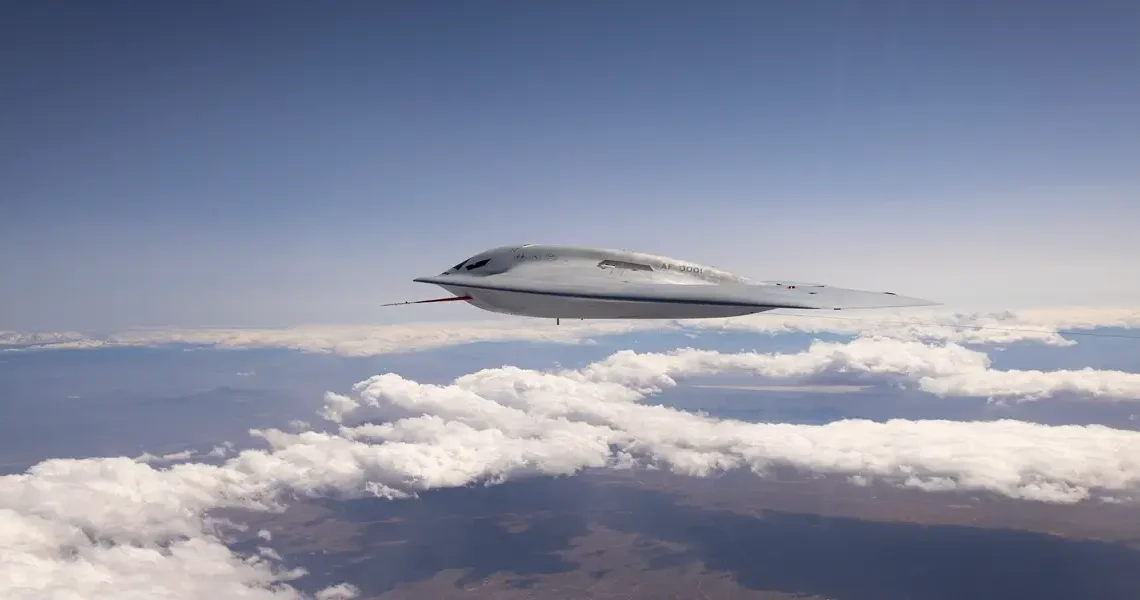The Air Force just got a burst of extra funding for its new strategic bomber and intercontinental ballistic missile programs, with hundreds of millions of dollars tucked into last week’s government shutdown deal.
The money will go to construction projects supporting the B-21 Raider and Sentinel ICBM, both of which are high priorities for the Air Force amid efforts to modernize its platforms capable of delivering nuclear weapons.
Signed by President Donald Trump last Wednesday, the spending package provides the Air Force with $3.9 billion for military construction projects, more than $200 million above the service’s budget request for fiscal year 2026.
Roughly $850 million is designated for infrastructure supporting the B-21 and Sentinel. Air Force bases like Ellsworth, Whiteman, and Dyess — which will house the B-21 for training and main operations — received money to build flight simulators, specialized hangars, mission planning facilities, a weapons release storage system, and a radio-frequency hangar.
The B-21 bomber will be delivered first to Ellsworth once operational. It’s the successor to the B-2 Spirit, and its developer, Northrop Grumman, has said that the new aircraft will feature next-generation software, weapons, and stealth capabilities.
The program has largely been viewed within the Air Force and the broader Pentagon as a success, with flight tests and early procurement remaining on schedule and within budget. The Air Force expects to buy around 100 of the new bombers by the mid-2030s.
The additional funding specifically for B-21 projects at Dyess marks “the largest investment” in the base’s history, US House Budget Chairman Jodey Arrington, a Republican representative from Texas, said in a press release. The funds “will directly support the B-21’s arrival and ensure Dyess remains the tip of the spear for America’s air arsenal.”
The money for Sentinel infrastructure includes $130 million for a utility corridor at F.E. Warren Air Force Base. This program has faced cost overruns and delivery delays, which the Pentagon has blamed on an unrealistic delivery schedule, problems with Sentinel’s engineering and system design, an atrophied ICBM industrial base, and organizational issues within the Air Force, according to a Government Accountability Office watchdog report.
Air Force officials have said much of the Sentinel’s cost growth has gone toward modernizing infrastructure for launch facilities and constructing new silos.
The extra $850 million going toward the B-21 and Sentinel programs is a drop in the bucket for two very costly projects. The B-21 is expected to have a lifetime cost of $200 billion, while the cost for Sentinel has ballooned to over $140 billion, but it is fairly substantial at the base level as an infrastructure investment.
The additional money for both Sentinel and B-21 infrastructure comes as Air Force officials continue to emphasize nuclear modernization, as the service operates two legs of the US nuclear triad. The US Navy’s new Columbia-class ballistic missile submarine, the Navy’s own major modernization effort, is also under construction as an upgrade to submarine-based nuclear weapons, though it, too, has been hit with delays and cost overruns due to ongoing US shipbuilding challenges.
Read the original article on Business Insider
The post The US Air Force’s new strategic bomber and ICBM got more money — almost $1 billion —in the government shutdown deal appeared first on Business Insider.




